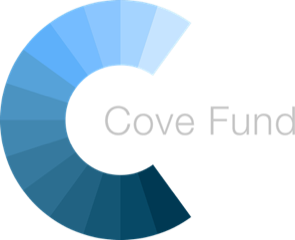Post-Funding Discipline: How Founders Should Operate After a Capital Raise
For many startup founders, securing a capital raise is a moment of triumph—validation of their vision, team, and opportunity. But seasoned investors will tell you: the work doesn’t end at funding. In fact, it begins in earnest.
We asked the Limited Partners (LPs) at Cove Fund, many of whom are experienced operators and investors, one question: “What advice would you give founders about how to operate post capital raise?” Their insights form a powerful playbook for the next phase of your journey—operating with discipline, urgency, and strategic clarity.
1. Treat Every Dollar Like It’s Your Last
"Throw around quarters like they were manhole covers." This colorful metaphor underscores a critical mindset shift. LPs consistently stressed financial prudence. Even after raising a successful round, founders should treat capital as if it were their personal savings. Every expenditure should be tied directly to key milestones.
One LP put it simply: “Always assume there will be no more fundraises.” That’s not pessimism—it’s discipline. Plan your runway with the assumption that future funding may not materialize. This mindset forces smarter decision-making and builds resilience into your business model.
2. Execution > Everything
The capital raise was a promise. Execution is how you fulfill it.
Several LPs emphasized the importance of delivering on the milestones pitched during the raise. “Investors backed the team based on those expectations, so demonstrating progress against them is critical for maintaining trust,” one noted.
This isn’t just about hitting numbers. It’s about strategic follow-through: building product, acquiring customers, growing revenue, and hitting technical or regulatory goals. Execution is what separates durable companies from those that stall post-funding.
3. Communicate Early, Especially When Things Go Wrong
Startups rarely go exactly as planned. LPs shared a consistent message: don’t hide challenges. Share them early, and enlist your investors to help solve them.
“It’s easy to share good news, but the real mark of a strong founder is the willingness to share bad news early,” said one LP. This openness invites support. Many LPs have faced similar issues and can provide advice, introductions, or strategic insights—if they know early enough to help.
4. Grow, But Stay Focused
Post-raise, there’s often pressure to do more—hire faster, expand quicker, pursue multiple markets. But LPs caution against spreading too thin.
“Focus maniacally on the most important business issue(s),” advised one. That may be customer acquisition, product iteration, or technical validation. Whatever it is, founders must concentrate resources on a few high-impact priorities.
One LP suggested looking at one or two high-value opportunities outside Southern California—but not more. The implication is clear: test expansion thoughtfully, but don’t let it distract from your core.
5. Build the Story As You Execute
Execution is not just about checking boxes—it’s about building a compelling narrative of progress. LPs emphasized the importance of continuing to “build the story” and “set new milestones” post-funding.
Your narrative should evolve as your company grows. Use board updates, investor newsletters, and KPI dashboards to tell a consistent story: here’s what we said we’d do, here’s what we did, and here’s what’s next.
Great companies manage not just performance, but perception—by keeping stakeholders aligned with a clear and credible story.
6. Focus on Time-to-Breakeven
While growth is often the headline in early-stage fundraising, smart capital deployment remains the subtext. One LP advised: “Concentrate on growth strategy and accelerate time to breakeven.”
For some startups, breakeven may be a long way off—and that’s okay. But every founder should have a view of the path to sustainability, and be actively managing burn relative to revenue and milestones.
7. Stay Agile and Be Willing to Pivot
Perhaps the most important message: execution isn’t linear. Startups must adapt.
“Even if the original science or technology doesn’t work as expected, a capable and adaptable team can pivot early, reassess their strategy, and find a new path forward,” shared an LP. This resilience—combined with speed and strategic clarity—is what keeps startups alive and competitive in volatile markets.
Final Thought: Capital Is Fuel, Not a Finish Line
You raised money because investors believed in your team’s potential to execute. Now is the time to validate that belief—through action, communication, discipline, and agility.
Operate like every dollar matters, like every week counts, and like your team’s ability to adapt is your greatest advantage. That’s how great companies are built post-raise—and that’s the standard our LPs expect.
About Us
Cove Fund is a seed-stage venture capital fund based at UC Irvine’s Beall Applied Innovation, a hub for Southern California entrepreneurs and investors. We invest in early-stage technology and life science companies with differentiated products that address large markets and can achieve major milestones with seed funding.
Since our inception, we have invested over $20 million and are actively deploying capital from our $24 million third fund. If you are a Southern California startup seeking funding — or an investor interested in becoming a limited partner — visit us at www.covefund.com.
